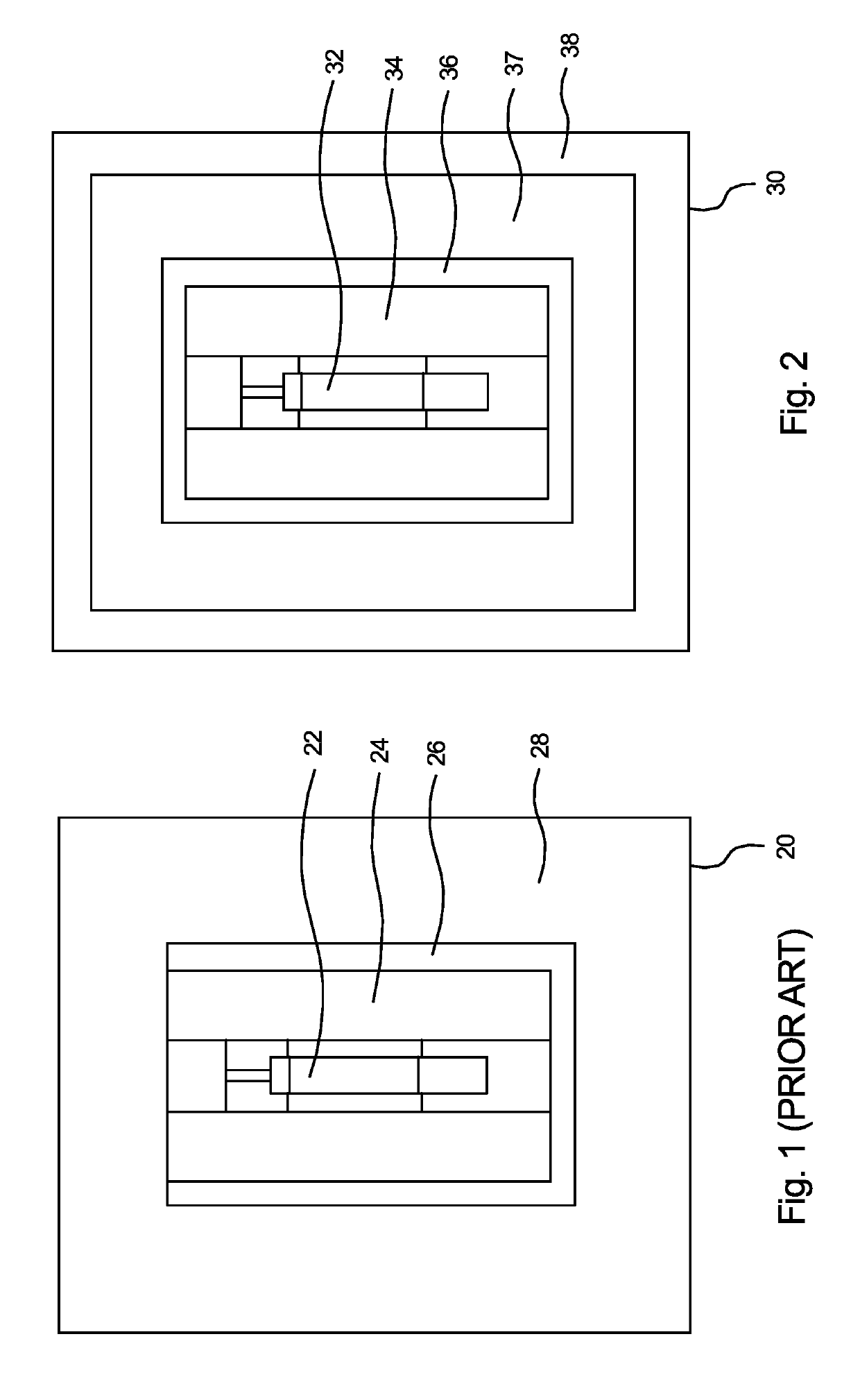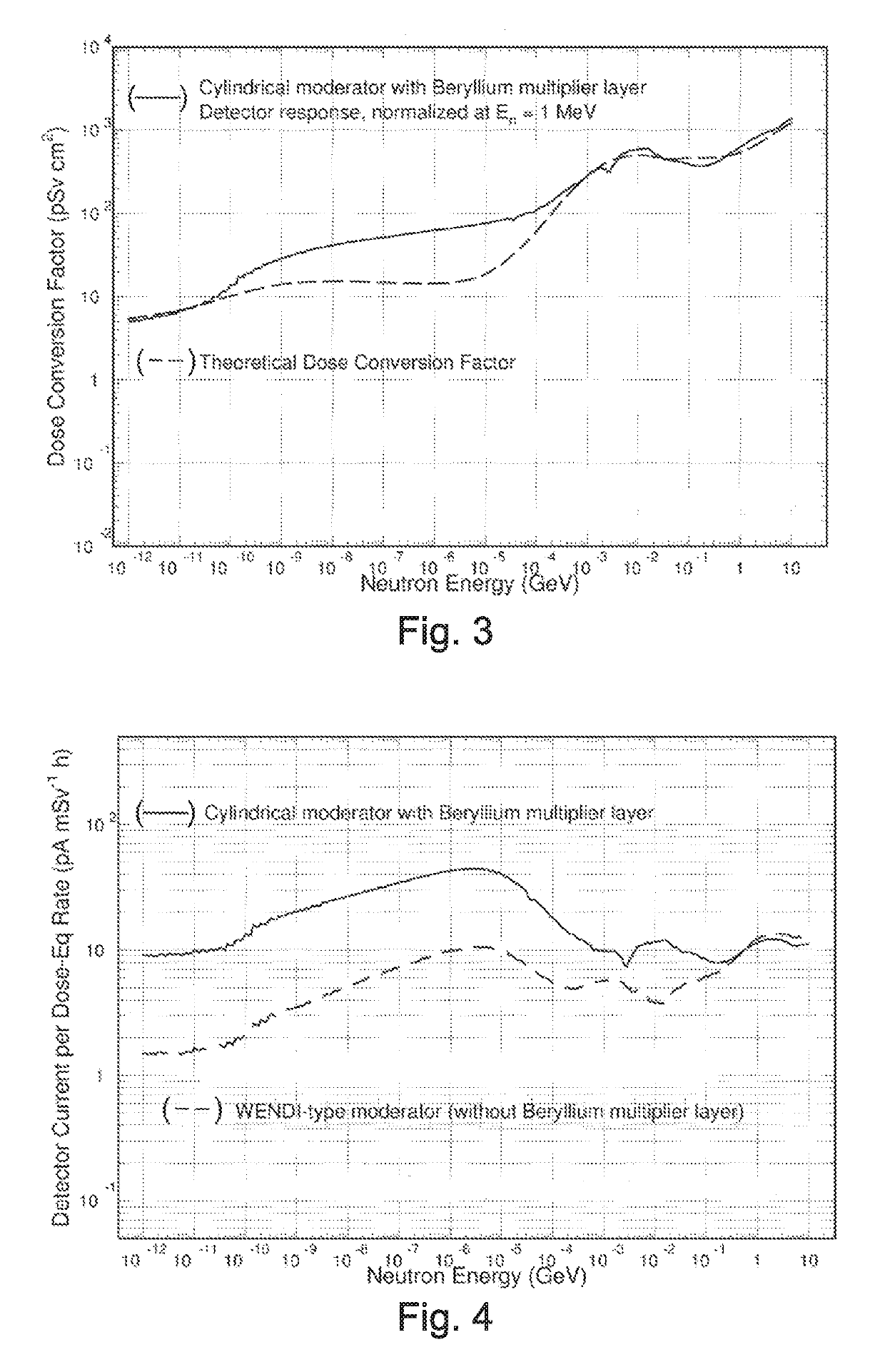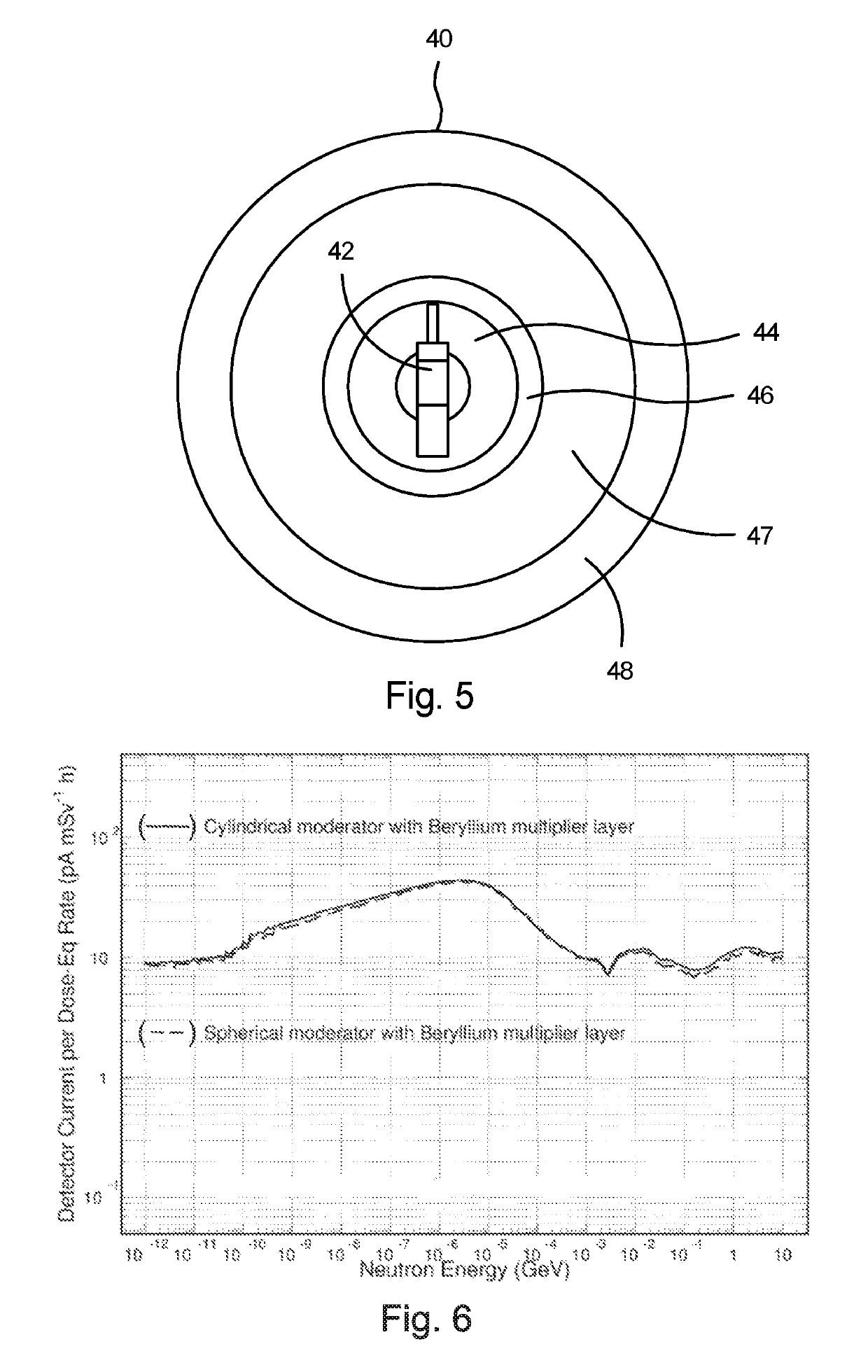Neutron detector and dose rate meter using beryllium-loaded materials
a technology of beryllium-loaded materials and neutron detectors, which is applied in the field of radiological monitoring devices, can solve the problems of inability of conventional devices to measure neutron dose rates, and achieve the effects of improving sensitivity and energy response, improving sensitivity of detectors, and adjusting energy dependence of sensitivity
- Summary
- Abstract
- Description
- Claims
- Application Information
AI Technical Summary
Benefits of technology
Problems solved by technology
Method used
Image
Examples
first embodiment
[0035]Referring to FIG. 2, a Be-loaded rem meter neutron moderator assembly according to the present invention. Moderator assembly 30 is a cylindrical moderator that includes a neutron detector 32, an inner moderator layer 34 constructed of high density polyethylene, a medium-Z inner material layer 36 preferably constructed of copper alloyed with 2-10% beryllium and more preferably 5-10% beryllium, a beryllium-loaded layer 37 constructed of Be metal, and an outer moderator layer 38 preferably constructed of high density polyethylene. Moderator assembly 30 is a cylindrical moderator with overall dimensions of 28 cm diameter by 40 cm length.
[0036]FIG. 3 illustrates the comparison of the response function of the cylindrical Be-loaded rem meter neutron moderator assembly 30 with the theoretical dose-equivalent conversion factor function, normalized at En=1 MeV, assuming that the neutron detector is comprised of the 3He-filled IC 32 with 3He gas at 10 atm. FIG. 4 shows the comparison of ...
second embodiment
[0037]With reference to FIG. 5, the beryllium-loaded neutron moderator of the present invention may also be implemented in the shape of a sphere, giving the advantage of better directional uniformity of the detector, and the extra advantage of lower weight as compared with the cylindrical embodiment. As shown in FIG. 5, a second embodiment is a spherical beryllium-loaded neutron moderator 40 including a small-volume neutron detector 42. The spherical Be-loaded moderator 30 includes an inner moderator layer 44 constructed of high density polyethylene, a medium-Z inner material layer 46 preferably constructed of copper alloyed with 2-10% beryllium and more preferably 5-10% beryllium % beryllium, a beryllium-loaded layer 47 constructed of Be metal, and an outer moderator layer 48 preferably constructed of high density polyethylene. Radius of the spherical moderator assembly 40 is 16 cm. The neutron detectors 22, 32, and 42 at the center of the compact cylindrical or spherical moderator...
fourth embodiment
[0043]With reference to FIG. 10, a moderator assembly for use as a neutron detector 60 in strong gamma-radiation environments. The neutron detector 60 includes two cylindrical ICs 61 and 62 filled respectively with 4He and 3He gases at 1-20 atm. The cylindrical ICs 61 and 62 are centered on the central axis of a moderator assembly made of several material layers. The difference between the currents in the 3He and the 4He ICs represents the neutron dose rate response of the detector. Moderator assembly 60 is a cylindrical moderator with overall dimensions of approximately 24 cm diameter by 36 cm length.
[0044]FIG. 11 shows the ionization current responses, calculated using the FLUKA Monte Carlo simulation tool as a function of the neutron or photon energy, per unit of radiation dose rate at the detector 60 placed in neutron or gamma radiation fields. The plot illustrates the degree of insensitivity of the detector to gamma radiation, and the ability to correct the result even in the o...
PUM
 Login to View More
Login to View More Abstract
Description
Claims
Application Information
 Login to View More
Login to View More - R&D
- Intellectual Property
- Life Sciences
- Materials
- Tech Scout
- Unparalleled Data Quality
- Higher Quality Content
- 60% Fewer Hallucinations
Browse by: Latest US Patents, China's latest patents, Technical Efficacy Thesaurus, Application Domain, Technology Topic, Popular Technical Reports.
© 2025 PatSnap. All rights reserved.Legal|Privacy policy|Modern Slavery Act Transparency Statement|Sitemap|About US| Contact US: help@patsnap.com



